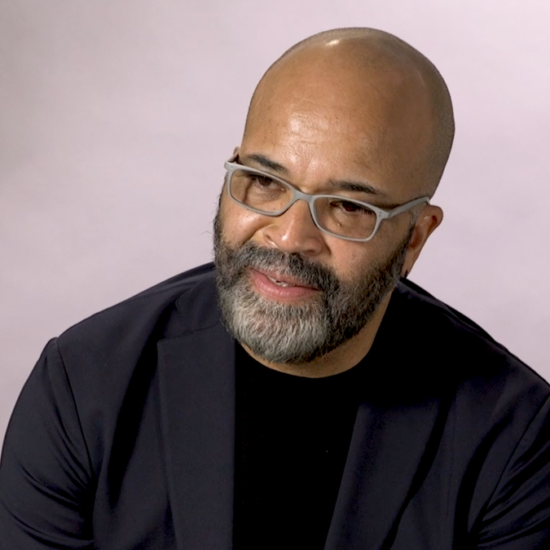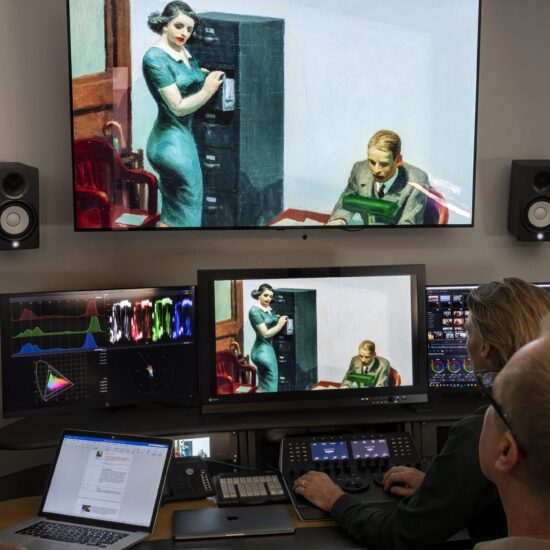
It’s easy to make the case that everyone needs to know about Buffy Sainte-Marie.
After all, she’s one of the most important living singer-songwriters, she’s been a lifelong advocate for Indigenous rights, and she was the first Indigenous person—and remains the only Indigenous woman—to win a competitive Oscar.
Sainte-Marie is also a visionary whose boundless curiosity pushes her to take artistic and technological risks. Sainte-Marie has always been ahead of her time, and she continues to innovate and evolve, “ripening” as she likes to call it. But when is Sainte-Marie at her most futuristic? Well, she doesn’t just make history. She changes the world.
Here are seven ways that Buffy Sainte-Marie has been ahead of her time.
1. Singing about opioid addiction disorder
In the early 1960s, Sainte-Marie consulted a doctor for a bronchial infection and he prescribed her what she thought were a course of antibiotics. A few weeks later, still feeling terrible, she went to a pharmacist to refill her antibiotic prescription and the pharmacist informed her that she wasn’t that kind of sick: he thought she was strung out and going through withdrawal. Sainte-Marie’s doctor had prescribed her opioid pills without her consent. The pharmacist refused to fill the prescription and Sainte-Marie suffered through the hell of withdrawal all on her own. Every inch of her pain aches through in her wrenching recording of “Cod’ine.” It was 1964 when she released the song on her debut album, “It’s My Way!” and she was just 23 years old, but Sainte-Marie refused to participate in any shame or stigma around her experience. In writing so candidly about what happened to her—decades before the current ongoing opioid crisis—Sainte-Marie offered up an early warning about the dangers of opioid addiction disease and that it could happen to anyone.
2. Writing one of the first feminist pop standards
Sainte-Marie didn’t set out to write a pop standard, much less a feminist pop standard, but her 1965 song “Until It’s Time for You to Go” is one of the defining triumphs of her songwriting career. It’s sung from the perspective of a woman who repeatedly states that she’s not interested in a long-term commitment.
“Don’t ask why, don’t ask how, don’t ask forever, love me now,” Sainte-Marie sings.
This was not the messaging of almost any pop song sung by a woman in the mid-1960s, even though the sexual revolution was just a couple years away. It’s no wonder so many men wanted to cover it, opting to change the words slightly and introducing a slight machismo to the song that was never in its DNA. Even Elvis Presley couldn’t resist “Until It’s Time for You To Go,” and every time he recorded it, his business people would call up Sainte-Marie to say she had to give up some of the publishing money and give him a credit. Every single time, she said no. As Sainte-Marie has said, “He hadn’t written it. I did.”
3. Referring to colonization as genocide in the 1960s
Sainte-Marie, who is Cree, was taken from her family, known as the Piapots, when she was just two or three years old. It was a common (and cruel and racist) practice in Canada at the time (later known as the “Sixties Scoop”), to take Indigenous children from their families and adopt them out to white families. Sainte-Marie was raised by an American family in a small town where there was almost nobody that looked like her, and she knew almost nothing about her own Indigeneity.
You force us to send our children away
To your schools where they’re taught to despise their traditions
Forbid them their languages;
Then further say that American history really began
By the time Sainte-Marie was in her early 20s, she was a passionate advocate for Indigenous rights and confronting the truth and realities about colonization and Indigenous people. More than 50 years before Canada officially recognized colonization as genocide of Indigenous people, Sainte-Marie had no qualms about stating the facts in her 1966 epic, “My Country ‘Tis of Thy People You’re Dying.”
And yet where in your history books is the tale
Of the genocide basic to this country’s birth?
4. Indigenizing “The Virginian”
Decades before there were demands on Hollywood to cast actual historically oppressed and marginalized people to play historically oppressed and marginalized characters, Sainte-Marie made it happen on “The Viriginian.” It was 1968 and Sainte-Marie was invited to play a major character on an episode of the popular Western television series. She agreed, but she had a few conditions: namely, that all of the Indigenous characters be played by Indigenous actors.
The producers assured her it would be impossible—that would be 30 to 50 actors—but not to worry: their makeup people could work their magic. Sainte-Marie said no; the point was that Indigenous people would bring their whole selves and their cultures to their Indigenous characters. It would be a richer experience for everyone involved, and it would also make for better television. Eventually the producers agreed, and Sainte-Marie’s successful negotiation made headlines in media like the L.A. Times.
5. A vanguard of electronic music
In 1969, Sainte-Marie became one of pop music’s earliest electronic artists. Her experimental album, “Illuminations,” was the first quadraphonic vocal record ever made and while the record had its fans initially, it was seen as a significant departure for those who hadn’t been paying attention to Sainte-Marie’s rapid evolution over her first five records from 1964 to 1968, and her journey from folk musician to fearlessly confident genre hopper. Electronic music fans have continued to rediscover “Illuminations” over the years, creating a cult following around the record and reassessing its cultural and musical value as well as Sainte-Marie’s contributions to the electronic music canon, including her 1976 use of sampling powwow music on her landmark love letter to Indigenous leaders, “Starwalker.”
6. Nursing on “Sesame Street”
When “Sesame Street” invited Sainte-Marie onto the show in 1975, her first instinct was to decline. She didn’t want to just count to 10 like every other guest. But then she asked if they’d ever done any Indigenous programming. They hadn’t, but they wanted to, and that’s how Sainte-Marie became a part-time resident of Sesame Street from 1975 to 1981. When she learned she was pregnant the following year, she was sure her time on the show would come to an end. Instead, Sainte-Marie stayed and her then-husband Sheldon Wolfchild and their baby Cody joined her occasionally. They became the first family to appear on “Sesame Street.”
This was and is significant in terms of representation as there weren’t a lot of positive depictions of Indigenous people by Indigenous people in pop culture at the time, let alone Indigenous families. In 1977, Sainte-Marie made further history as the first woman to nurse on television.
In a short, sweet segment, Sainte-Marie and Big Bird are hanging out while she feeds Cody. Big Bird asks what she’s doing and when Sainte-Marie says that she’s feeding her baby, Big Bird responds, “That’s a funny way to feed a baby.” Sainte-Marie calmly and patiently explains that lots of mothers feed their babies this way. Not all mothers, but lots of them. Big Bird’s response? “That’s nice.”
7. Making the first record over the Internet
Following the release of her 1976 album, “Sweet America,” Sainte-Marie didn’t make another album until 1992’s “Coincidence and Likely Stories.” The record signified more than just Sainte-Marie’s comeback; it was the first album ever made over the Internet. When English label Ensign asked Sainte-Marie if she was interested in making a new record, she said yes, but she didn’t want to relocate temporarily to London or fly back and forth to work with producer Chris Burkett.
Together they came up with a plan: even though the Internet was relatively new and the bandwidth was limited, they’d try to send MIDI files to each other. Then, even though they were thousands of miles apart, they’d build the files together and make “Coincidence and Likely Stories” byte by byte. It worked and Sainte-Marie made history yet again.




















